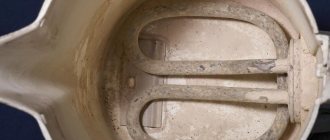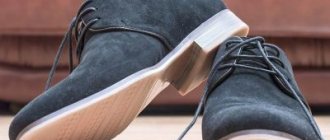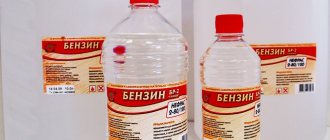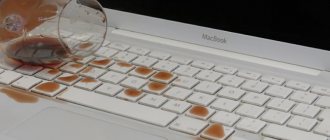Having your own car is not a cheap pleasure, no matter what they say. Do the math yourself, each car requires: fuel refills, which become more expensive from year to year, repairs, which happen even with new cars, regular maintenance, plus expenses for various kinds of documents (insurance, poles, etc.). But in addition to this, we need to purchase such an expensive “iron horse”.
Operating a car takes a lot of money, and the family budget suffers first of all. However, do not rush to call your car a “vacuum cleaner” for money, because here you should remember the benefits that a car brings: it saves time on movement, in some cases it performs the working function of transporting goods, sometimes a car is generally a tool for earning money, a clear example would be work at Taxi.
Having weighed all the pros and cons, you will still be inclined to believe that a car is still a profitable and useful means of transportation. Let's then think about how we can reduce the cost of repairs and various maintenance by providing proper care.
What is included in car care:
Appearance Technical condition Storage and operation Interior care Seasonal car maintenance Care products
So, the good condition of the spare parts and the car as a whole largely depends on how actively you take care of the car. Every time you get behind the wheel, you expose your iron horse to dust, dirt, fine gravel and other negative influences. But not only the technical condition of the parts suffers from this, but also the appearance of the car. I don’t think you will agree to drive a car that looks terrible. If you want to preserve the beauty and “youth” of your car, then start today by taking care of it and driving very carefully.
Purity of the iron friend
Keeping your car clean will extend its lifespan. In addition, if necessary, a well-maintained car can be sold faster. Its cost will be significantly higher than a similar copy, but with chips and scratches on the body, as well as stains on the seat upholstery. Therefore, in no case should normal sanitary and hygienic treatment be neglected.
Specialists from the Czech automobile company Skoda Auto studied the resistance of paintwork to detergents, ultraviolet radiation, dirt and water. It turned out that ordinary dirt can significantly damage the paint. If the car has not been washed after a long trip, dirt eats into the pores of the varnish and gradually corrodes it.
It was found that automobile dirt consists of four layers:
- A mixture of silicates and organic substances. Easily washed off with water.
- A mixture of insects, soot, asphalt particles, fatty substances and exhaust gas residues. Wash off with shampoos.
- The third layer consists of particles of damaged varnish and oxidized polishing residues.
- This layer includes particles released from synthetic resins. The last two layers can only be removed chemically, as well as using abrasive pastes.
You can maintain the integrity of the coating and the richness of its color by regularly cleaning the body. Unfortunately, sometimes owners can be overzealous in their desire to thoroughly wash their car. Improper car care can damage the paint.
Car shampoo
The most famous and frequently used product is car shampoo. Car shampoo is used when washing a car, since clean water is not able to remove all types of contaminants, especially organic ones. Shampoos often contain polishing additives that give the paintwork additional shine, as well as some protection from aggressive environmental influences.
Everyone should wash their cars like this)
Cleaning shampoos are more universal products: in their pure, undiluted form, they are used to remove stubborn stains - for example, insect marks, bitumen. When added to water, the cleaner can perform the functions of a regular car shampoo for washing the entire body. Cleaning shampoos are more convenient to use, because one package takes up less space than two, but still the usual car shampoos do their job a little better.
Car shampoo
To remove stains, waterless removers are also used, which are used only for local removal of stains that cannot be removed with a sponge and water.
Common Mistakes
Improper care of the car body can cause scratches, rust and even mold in the interior. Therefore, before you begin the dirt removal procedure, you should familiarize yourself with the main mistakes and try to avoid them:
- Dry cloth. On ordinary fabric there are many microscopic dust grains that act like sandpaper. Even if the cloth was perfectly clean, when it comes into contact with dirt, it will give the same grinding effect.
- Household chemicals. You may hear advice that it is better to replace professional car body care products with ordinary household chemicals. - for example, dishwashing liquid, cleaners for sinks and other surfaces. In some cases, household chemicals do a really good job of removing heavy dirt, but their aggressive action destroys varnish and paint.
- Saving on care. Cheap car care products won't be much better than dishwashing liquid. The fact is that a quality product not only cleans, but also leaves behind a protective layer that repels dirt. The cheap product leaves behind a sticky residue. As a result, dust and dirt will stick to the body even more.
- Old dirt. Housewives know that stains on clothes must be washed immediately after they appear. This will make their removal much easier. The situation is the same with automobile pollution. Traces of bird droppings, bitumen, insect corpses and various oxidizing drinks must be removed as soon as possible, otherwise the paintwork will be damaged.
- Hot shower in winter. Hot water is more pleasant to the hands, and it copes with dirt better than cold water. But sudden temperature changes can cause the varnish to crack and destroy frozen glass.
- Brushes. Hard bristles scratch the body, so you should carefully brush off only the top layer of snow. You can use the scraper provided that the glass has warmed up and the ice has begun to gradually come off on its own.
State numbers, due to their location, are subject to heavy pollution. Despite this, you should not scrub them with particular zeal. The paint on the numbers and letters will not withstand the powerful pressure of cleaning agents, and the numbers will have to be changed.
Car painting
Do you want to update your car? Or do you just want to brighten up an existing color? Then painting will come to your aid. Why are we telling you about it in an article about car care? Painting not only changes the appearance of the car from a decorative point of view, but also provides it with additional protection.
There are different types of painting:
- Full. Complete renewal of the color of the entire paintwork or change it.
- Partial. This involves painting individual problem areas with the existing color.
Of course, the service guarantees you a professional and high-quality coating, but often motorists want to paint the car themselves. The main thing in this matter is not to do any harm, and therefore we decided to talk about all the stages of painting.
- Choice of paint. This is the most important stage, and here we are not talking about color, but about the quality of the material for painting. You can save on paint, and then, at best, see it peel off on the second day. Sometimes negligence and excessive savings can cost you the car itself.
- Materials. Like paint, putty, primer and varnish are very important for painting. Their quality will be reflected in the appearance and protection of your car.
- Preparing the car. Before painting, it is necessary to thoroughly wash, dismantle unpainted parts, apply putty and primer to the surface. Pay special attention to preparing the workplace.
- Dismantling. In the case of local painting, it is necessary to dismantle the part that will be painted later.
- Applying paint. It is recommended to apply in 2-3 layers, leave to dry at constant room temperature in a clean room. Several layers of paint will help make the color brighter and more saturated.
- Polishing. To enhance protection, we recommend polishing the part after painting. This way you can not only avoid rust, but also prolong the shine and brightness of the paint.
However, for complete painting, we recommend contacting services, since this process requires professionalism and the presence of a large room with special equipment.
Body wash
Water is unable to wash contaminated areas and completely wash away dirt and dust, so watering the car with water and washing it off with a rag is ineffective. It is necessary to use a special car body care product, for example, car shampoo. In addition, you will need a special sponge with a soft and grainy surface. The large pores of the sponge draw in grains of sand and are easily washed. Thanks to this, the body coating is not scratched.
It is necessary to take care of a fiber towel in advance. It will help completely remove any remaining moisture. Otherwise, the drops, like a lens, will concentrate sunlight. This will lead to stains on the body.
It is recommended to start cleaning the body by removing dirt from under the windshield. Then you can proceed directly to washing. Some car owners prefer to use a high-pressure hose for this. Others claim that this is harmful to the coating and use a regular hose attached to the faucet. Separately, it is worth preparing a bucket of water and special shampoo dissolved in it.
Wet the body generously with water, then apply detergent using a sponge. Pay special attention to the most polluted places. Rinse the shampoo completely with water, wipe the surface dry with a fiber towel.
Technique
Currently, service centers are still open, so now is a great time to change the oil and check the condition of other technical fluids. Add coolant (but not water). Ask a mechanic to check the condition of your brake fluid, which is hygroscopic, meaning it absorbs water, and after a long period of sitting it can be an unpleasant surprise.
A tempting idea is to spray the metal surfaces of the engine with a lubricant like WD-40, which displaces water. Of course, this can help with very long-term storage, but you should not protect brake discs in this way.
A much better idea is to apply special lubricant to door hinges, locks and latches, trunk and hood hinges.
Discs, seals and windows
The rims, like the body, must first be wetted. Wipe with a sponge soaked in shampoo. Carbon deposits that form due to the operation of brake pads can be removed using a special cleaner. The product is sprayed onto the wheel rim. Leave for a few minutes. If necessary, further clean with a brush. Wash off with water.
Rubber seals can become brittle due to contamination, so they also need to be given attention. You can clean the seals by wiping them with a damp cloth. It is recommended to lubricate dried seals with Vaseline.
It is enough to wipe the glass with a damp cloth. If they are significantly dirty, ammonia and warm water will help. You can use a special glass cleaner.
Wheels
More precisely, tires. Before storing, you should make sure that everything is in order with the tires and that they do not flatten from minor punctures. It is recommended to inflate the tires to the pressure recommended for heavy loads (this should be found in the instructions or on special plates on the body). This way, after storage, you can drive away normally and not have the adventure of pumping up flat tires.
Try to resist the temptation to simply increase the pressure even more than recommended. Keep yourself in control and keep your blood pressure within the recommended values.
If you decide to go completely all-in, then you can completely remove the wheels and store the car on special stands. Just make sure the stands are in the locations recommended by the vehicle manufacturer. Oh, and inflate your tires to performance and store them on their sides. This is if they are on disks. If the tires do not have rims, they are stored standing up.
Removing dirt from headlights
The low beam illuminates the road in front of the driver for 50-60 meters, and the high beam illuminates almost 100 meters. In addition, drivers of oncoming cars see burning headlights at night at a distance of about two kilometers. If something goes wrong, they will have time to react.
Dirty headlights have a significant impact on visibility, which can be reduced by up to 95%. On the highway, especially at high speeds, it will be impossible to see anything, even a few meters ahead. It will also be impossible to react quickly to danger. Therefore, it is important to clean the headlights in a timely manner: this will not only make the car more beautiful and well-groomed, but will also save lives.
A standard wash, along with the body, is usually sufficient. But in the summer, especially after a trip to nature, the windshield, grille and headlights can be covered with insect corpses. If this mass hardens on hot headlights, it will be very difficult to get rid of it.
Glass cleaner and a rag will do the trick if you clean your headlights as quickly as possible. If the dirt has hardened, it is recommended to use insect removers. Many drivers recommend a product that has been proven over the years - WD40 fluid.
Electrics
It is best to purchase a so-called battery charger, which plugs into an outlet and keeps the battery running. The coolest ones have a recovery mode: as soon as the battery charge decreases, smart, gentle charging is automatically turned on. As an alternative, you can completely disconnect the battery from the car and simply connect the terminal again when storage is complete. But the charge may still not be enough, so you will have to stock up on a booster.
However, modern cars have too many electronic systems that need power, so it's better to leave the battery connected (and smart charging if possible) than to later call the dealer for lock codes or restore reset user settings.
Elimination of minor defects
A shallow scratch to the ground or a chip is not a serious threat to the coating. It can be easily removed using a special pencil. Of course, the defect will not disappear completely, but it will become less noticeable.
Deeper scratches require the use of special polishes. They are:
- waxy;
- abrasive.
Wax products are a temporary solution. After several washes, the wax will be washed off and the scratches will appear again. An abrasive polish can permanently eliminate the defect. Unfortunately, along with the scratch, it also removes a small layer of varnish, which is not at all endless. If you use this product frequently, the body will become covered with dull spots.
Let's sum it up
For a responsible driver, buying a car is like adding a new member to the family. For full functionality, the car will require regular monitoring of its technical condition and maintenance: trouble-free operation, a well-groomed appearance of the car and internal order in the cabin will significantly increase the status of the car owner and the comfort of operation. Along with the purchase of a vehicle, it is worthwhile to immediately, without delaying for an indefinite period, purchase high-quality car cosmetics that will allow you to keep the car clean and in impeccable order. Scheduled visits to service stations will extend the operating life of the machine, delay the need for repair work, and, if the need arises to sell the machine, increase the chances of a successful transaction.
Caring for the salon
Washing the body cannot ensure coziness and comfort inside the car.
Caring for the interior of a car requires an equally responsible attitude. The process may seem simple, but it's not entirely true. Cleansers should be selected based on the specific materials (synthetic, natural or artificial). Cleaning the interior begins with a vacuum cleaner. Particular attention is paid to the chairs. After vacuuming, wipe the plastic parts of the interior with a microfiber cloth. Additionally, a special cleaner should be used.
Upholstery update
It is not enough to wipe stains on the upholstery with a damp cloth. You will have to take them more seriously and purchase cleansers that are applied in the form of thick foam. Preference should be given to quality products. Cheap products can leave streaks and stains.
Some stains require additional treatment before using the cleaner. Dried blood will be easier to clean if you first place ice cubes on the stain. Contamination from sweet juices or baby food is washed away with clean water. Chocolate stains are moistened with hot water. Only after this can you rub in the foam cleaner.
The leather interior is cleaned with a damp sponge and a cleaner intended for treating leather. After this, use a soft, clean cloth to wipe off any remaining chemicals. Then a special oil or cream is applied. It is left to absorb for 30 minutes and the product is reapplied.
A high-quality cream prevents the skin from sticking to the body, while making it soft to the touch. It should be completely absorbed and not harden. Otherwise, a hard film is created that prevents the upholstery from stretching under the weight of a person. It will crack, then tear. A low-quality cleaner will significantly shorten the life of leather upholstery.
You should not overuse creams and cleansers. This may cause stains. Color enhancer is also a waste of money. The effect will be noticeable for no more than a week.
A quality leather care product can significantly renew your upholstery. Audi and Mercedes salons use products from the American company Meguiar's. The brand is over 100 years old. All this time, Meguiar's has been producing the best professional auto chemicals. In recent years, the company has launched an amateur series in which you can find products for cleaning leather, textiles, vinyl, rubber bands, bodywork, headlights and even tires.
Important cleaning details
An interior that is not sufficiently dried after cleaning and washing can cause rusting of metal parts and even the development of mold.
In addition, in cold and damp weather, increased humidity in the cabin will cause the windows to fog up. This will significantly impair the driver's visibility and may cause an accident. Drying the car will help get rid of the problem. In the warm season, the car is dried outside, in the cold season - in a heated garage. First, all the carpets are removed from the interior, and the doors and windows are left open. Additionally, you can use a hairdryer. Depending on the situation, drying may take several days.
It is important to properly care for your machine to extend its life. In addition, sooner or later the iron horse will have to be sold. A well-maintained car will have far fewer competitors in its class.
Monitor the external condition.
Make sure that there are no deep cracks, cuts, protruding threads, tread peeling, metal wires or bubbles (hernias) on the sidewall of the tire and on the tread. Also make sure that there are no foreign objects, sharp metal fragments, nails, glass fragments on the tread surface
It’s clear with nails, screws and other sharp objects - if they cut into the tread, then it is better to replace the wheel with a spare one, even if the pressure does not drop, and take the damaged one to a tire shop.
As for the pebble stuck in the tread relief, it is advisable to remove it, although of course, if this phenomenon is not frequent. Depending on the tread pattern and roads, stones can become clogged constantly and several at a time. There's nothing you can do about it - some fly out, others get clogged.
But if this is not an everyday occurrence, if you do not often have to drive on such roads, then it is better to clean the wheels of stones, because this is still a factor affecting their wear.
It is important that all 4 wheels are identical, but if this is not possible, then at least there should be pairs - identical wheels on the same axle (both tires and rims). It is advisable to sometimes swap them (left-right) to ensure even wear.
If winter tires have studs, then all wheels must be the same (with studs). You cannot, as many drivers do, put studded tires only on the leading pair. This is a safety issue - handling on an icy road (for which, in fact, it is intended) deteriorates, especially when cornering.
In addition, you must drive studded tires on dry asphalt without sudden jerks, braking, maneuvers and at a speed of no more than 70 km/h - otherwise the studs will quickly wear off.
Monitor for wear.
If tires are heavily worn, they are prone to punctures.
Then the risk of aquaplaning increases (this is what they call losing control of the car when you get into a puddle), due to the fact that as the tires wear out, the water drainage grooves become less deep. And, of course, the more worn out the tires are, the worse the car’s grip on the road. For different types of rubber, the wear rate is different, but, in any case, the tread pattern should not be less than 1.6 mm. It is absolutely forbidden to drive on bald tires.
Unadjusted wheel alignment and unbalanced wheels lead to rapid tire wear. At the slightest sign of uneven wear, you must contact a service station specialist to adjust the camber, toe and balancing.
If the tire has a directional tread pattern, then the direction of rotation must be observed during installation. If there is an asymmetrical pattern, you should be guided by the corresponding inscriptions on the side of the tire - outer (Outside) and inner (Inside).
What else affects tire wear?
Quality of the road surface. There are road surfaces, especially asphalt, that include inclusions of sharp and hard stones. This significantly increases their wear - up to 40%. Driving pattern and speed. If you sharply accelerate the movement, often intensively brake, or sharply maneuver at high speeds, then conditions are created that significantly reduce the service life of the rubber (a speed of 120 km/h “helps” it wear out twice as fast as a speed of 60 km/h). Ambient temperature. The wear resistance of tires largely depends on the temperature of the air and the road while driving. If the temperature of the road surface increases significantly, its wear also increases. If you overload a car by 20%, then you will reduce their service life by 20-30%. It would be a good idea to properly break in new tires before intensive use. Many manufacturers strongly recommend running-in, but in any case it definitely won’t be superfluous, especially for studded tires. To one degree or another, this will definitely have a positive effect on its wear resistance.
This point, perhaps, should have been noted at the very beginning of the article. If we do not talk about intensive use, then we should note the importance of creating the right conditions for storing tires, for example, summer tires in winter and vice versa.
As noted above, an experienced driver, before getting behind the wheel, automatically, at least for his part, glances at the wheels. And in order to become an experienced motorist, you need to be extremely careful and careful from the very beginning. Any part of the car can break, but everything connected to the wheels - steering, suspension, braking system - must always be in perfect condition
The movement and control of a car is carried out through the wheels, so proper tire care is important, and perhaps even of paramount importance.











